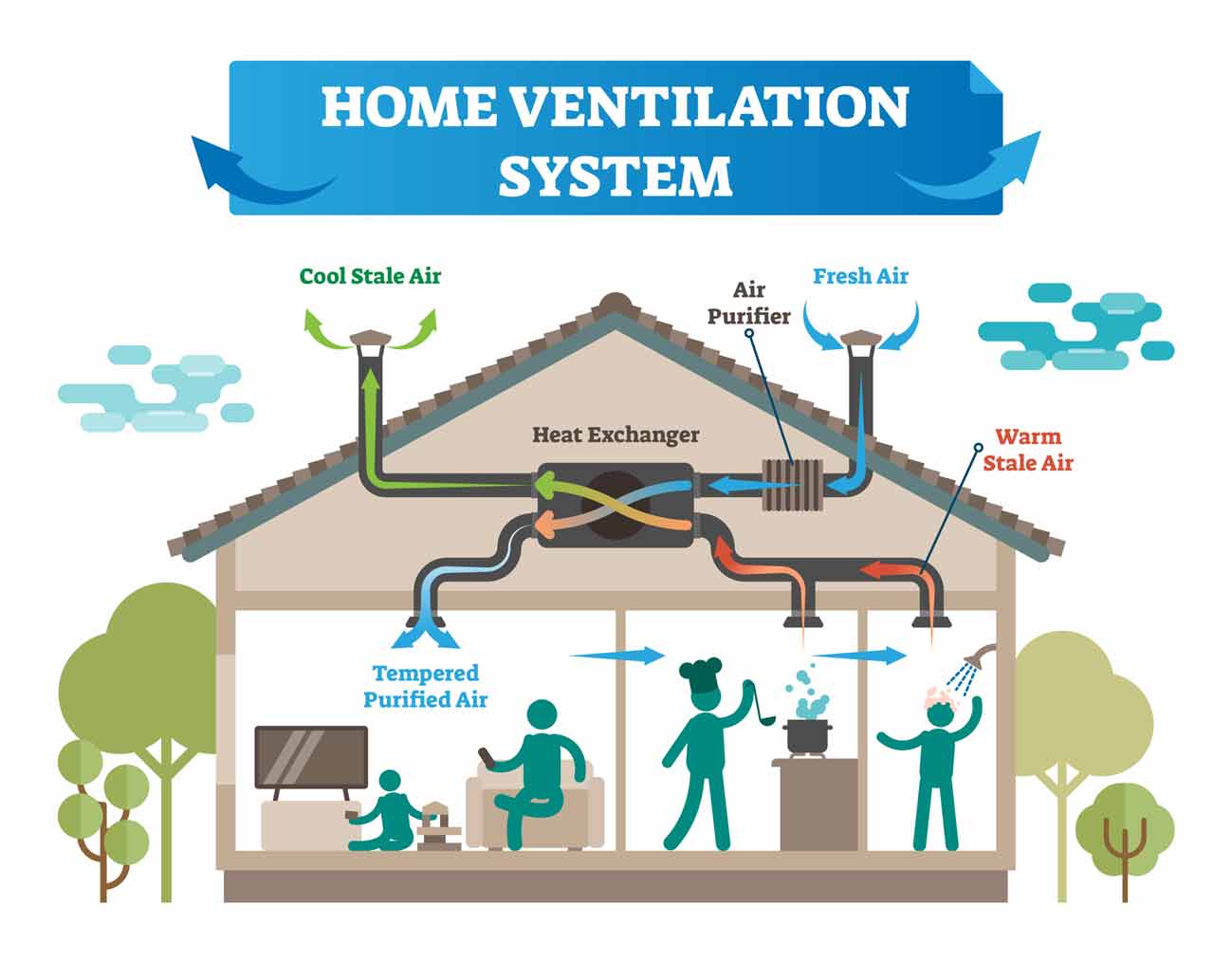Exactly How Heat Recovery Ventilation Enhances Indoor Air High Quality and Reduces Power Prices
Heat Recovery Ventilation (HRV) systems play an essential duty in improving indoor air high quality while simultaneously decreasing power costs. By successfully trading stagnant indoor air with fresh exterior air, HRVs help keep ideal moisture and minimize contaminants. Additionally, their capability to recuperate warm from outgoing air reduces the pressure on heating and cooling systems. As energy expenses proceed to rise, recognizing the complete potential of HRV systems ends up being significantly essential for homeowners and services alike.
Understanding Heat Recovery Ventilation Solutions

Heat recovery ventilation (HRV) systems play a crucial duty in enhancing indoor air quality, especially in modern-day, energy-efficient structures. These systems are developed to move warm from the outgoing stagnant air to the inbound fresh air, thus reducing power loss while maintaining ideal temperature level degrees inside. HRVs include a warmth exchanger, followers, and ductwork, facilitating the continual blood circulation of air. By eliminating indoor pollutants and presenting fresh air, HRVs help to balance humidity degrees, stop mold growth, and minimize allergens. The efficiency of HRV systems hinges on their capacity to recuperate up to 80% of the warmth from the worn down air, promoting power conservation while ensuring a healthy indoor setting. Their assimilation is vital in attaining sustainable living techniques.
The Relevance of Indoor Air Quality
Indoor air quality (IAQ) is an essential element affecting the wellness and health of residents in any setting. Poor IAQ can bring about different wellness concerns, consisting of respiratory system issues, allergic reactions, and fatigue. In addition, it can exacerbate present problems such as bronchial asthma. Variables adding to low IAQ consist of contaminants from indoor sources like cleaning representatives, mold and mildew, and inadequate ventilation. Preserving excellent IAQ is vital for advertising a risk-free and comfortable living or working room. Effective techniques to enhance IAQ include routine surveillance of air top quality, correct ventilation systems, and reducing the use of dangerous materials indoors. By prioritizing IAQ, individuals can assure a healthier setting that fosters efficiency and general high quality of life.
Energy Efficiency Benefits of HRV Solutions
Several home owners and building managers are increasingly acknowledging the energy effectiveness advantages of warm recuperation ventilation (HRV) systems. By moving warmth from exhausted indoor air to incoming fresh air, HRV systems significantly minimize the power needed for heating & cooling. This procedure reduces reliance on standard HVAC systems, causing lower power costs. Additionally, HRVs help preserve a well balanced indoor environment, stopping extreme home heating or cooling down needs. The capability to recoup approximately 90% of the warmth from outward bound air likewise sustains sustainability efforts by lowering overall energy consumption. As a result, HRV systems add not just to set you back savings but likewise to a minimized carbon impact, aligning with the expanding focus on energy-efficient building practices.
Installation and Maintenance Considerations
The efficient application of warm healing air flow (HRV) systems requires cautious factor to consider of installation and maintenance aspects to guarantee peak performance. Proper positioning of the HRV unit is crucial, as it ought to be set up in an area that makes best use of air flow while decreasing noise interruption. Additionally, ductwork has to be appropriately sized and shielded to avoid power loss. Regular maintenance, consisting of filter replacement and system cleaning, is you can try these out crucial to safeguard optimum performance and interior air top quality. Owners should establish a routine maintenance schedule to identify and address possible concerns before they rise. Collaboration with knowledgeable professionals during both setup and upkeep phases can improve the long life and performance of HRV systems, eventually bring about better interior environments and lowered power expenses.
Real-World Applications and Success Stories
Checking out real-world applications of warm recuperation air flow (HRV) systems exposes their substantial influence on indoor air quality and power effectiveness throughout different setups. In household structures, home owners have actually reported enhanced air high quality, causing fewer allergic reactions and respiratory system issues. Schools implementing HRV systems have actually kept in mind improved student concentration and decreased absenteeism because of much her explanation better air flow. Business buildings, such as workplaces and retail areas, have experienced reduced energy costs and increased staff member performance. A company office in a temperate climate accomplished a 30% decrease in energy costs after mounting an HRV system. These success tales show that HRV technology not just contributes to healthier atmospheres however also offers substantial financial benefits, making it a valuable investment for different industries.
Frequently Asked Inquiries
Can HRV Equipments Decrease Irritants in Indoor Air?
The efficiency of HRV systems in decreasing interior allergens mainly rests on their capacity to filter and exchange air. HRV Heat Recovery Ventilation. By continually replacing stagnant air, these systems can considerably decrease irritant degrees throughout indoor settings

Just How Does Moisture Affect HRV System Efficiency?
Moisture substantially influences HRV system efficiency; high degrees can cause condensation, decreasing performance, while low humidity may enhance air exchange. Stabilizing moisture is vital for suitable operation and keeping interior air quality.
Are HRV Systems Noisy Throughout Procedure?
HRV systems can produce varying noise levels during procedure, relying on their design and setup. Some units run quietly, while others might generate obvious audio, particularly at greater airflow setups or description when improperly preserved.
What Is the Ordinary Lifespan of an HRV System?

Can HRV Equipments Be Used in All Environments?
HRV systems can be made use of in numerous environments, however their efficiency may vary - HRV Heat Recovery Ventilation. In extreme temperature levels, changes or supplemental systems might be necessary to ensure perfect performance and comfort while maintaining indoor air high quality